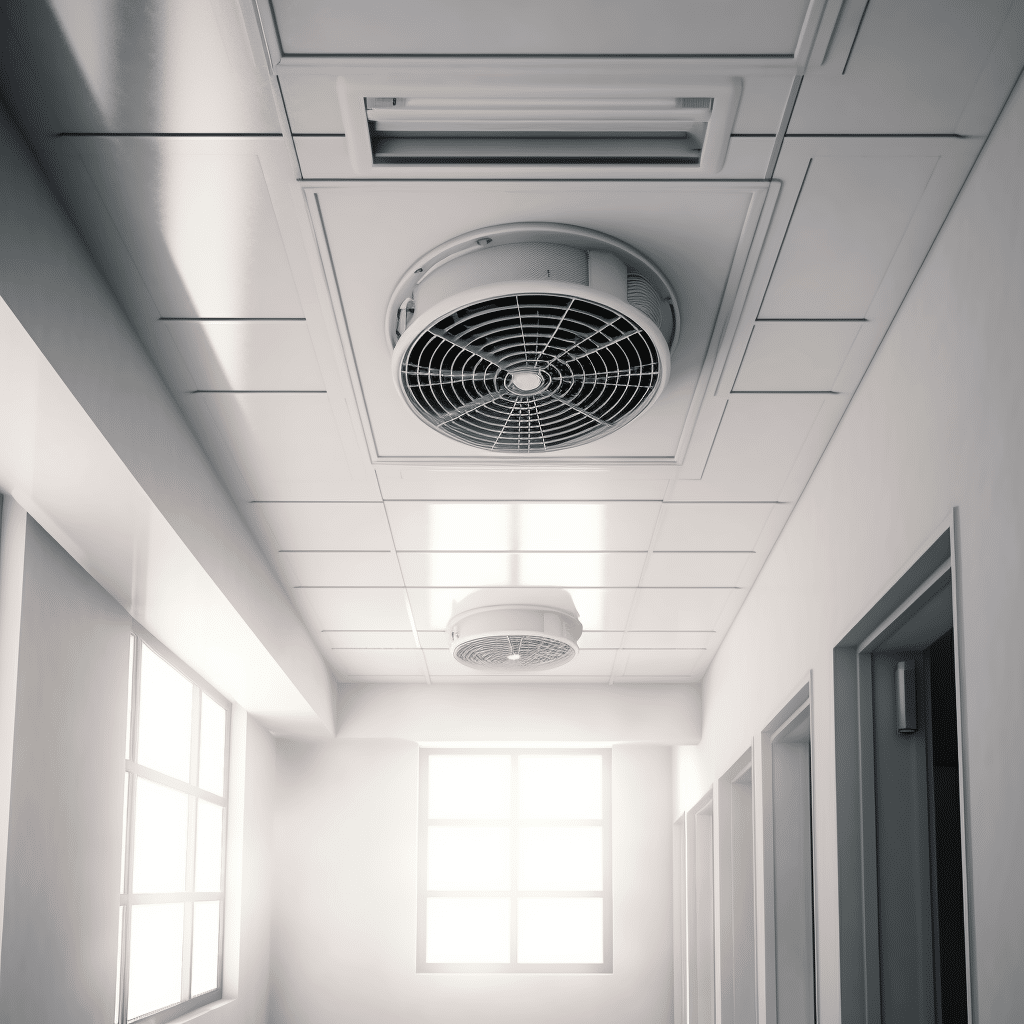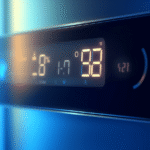.jpg)
Table of Contents
Introduction – Understanding the Importance of Bathroom Ventilation
It’s essential to understand the importance of bathroom ventilation. It prevents mold and mildew growth, bad odors, and high moisture levels. Plus, it prevents damage to paint, wallpaper, and fixtures. An exhaust fan and open windows help promote airflow. Clean and maintain the ventilation system for maximum efficiency.
Bathroom ventilation not only improves indoor air quality, but also promotes good health. Moisture accumulation creates a breeding ground for bacteria and allergens, which can lead to respiratory problems. By providing proper ventilation, you can minimize these risks and create a healthier environment.
Ventilation also controls humidity levels, which is critical in humid areas. Excess humidity can cause peeling paint, warped wood, and mold. So, make sure your ventilation system removes moist air from the bathroom.
Pro Tip: For proper ventilation, install a timer switch for the exhaust fan. Don’t let your bathroom become a hot and steamy breeding ground – use proper ventilation!
Common Problems Caused by Inadequate Ventilation
Inadequate ventilation in bathrooms can cause a host of issues. These are due to the lack of airflow and moisture removal. Let’s look into them.
- Humidity: Without proper ventilation, trapped moisture results in high humidity. This encourages mold and mildew growth.
- Air Quality: Poor ventilation leads to stagnant air. This allows pollutants like odors and chemicals to build up, which can cause respiratory problems.
- Condensation: Insufficient ventilation causes condensation to form on bathroom surfaces. This makes them damp and vulnerable to damage, as well as ideal for bacteria and mold.
- Deterioration: Without proper airflow, materials in bathrooms can deteriorate over time. For instance, moisture can cause wallpaper to peel off or paint to crack.
It’s not just fans that are important for good ventilation. Vents and windows are also needed to help air circulate.
Harvard Health Publishing has reported that inadequate bathroom ventilation may contribute to an increased risk of respiratory infections. This shows us how important proper ventilation is for our health.
Make your bathroom smell fresh with ventilation systems that will make your guests think it’s the fan, not your cooking, that’s causing the stink.
Types of Bathroom Ventilation Systems
Bathroom ventilation systems are essential for good air quality and stopping the build-up of moisture, smells, and mold. Different types cater to different needs. Exhaust fans are the most common type. They draw out air and expel it outside. Ventilation fans with heat add warmth to the air. Energy recovery ventilators (ERVs) take out stale air and also recover heat or coolness. Humidity sensing fans switch on when excess moisture is detected, preventing mold growth. There are also more advanced systems with features like lighting and heating elements.
A friend experienced the power of a humidity sensing fan. It controlled moisture levels without any manual intervention. The fan’s built-in sensor picked up high humidity after long showers and switched itself on. This gave a pleasant environment and stopped mold risks. Keep your bathroom smelling fresh – no more wondering what you had for dinner last night!
Benefits and Considerations of Bathroom Ventilation
Bathroom ventilation is key for a healthy and comfy environment. Not only does it get rid of bad smells, but it stops mold and mildew growth too. Plus, it helps eliminate extra moisture, which can cause health problems and damage the structure.
- Fresh air: Ventilation ensures air with less bacteria, VOCs, and moisture.
- Mold-free: By reducing moisture, it keeps mold and mildew from forming and causing allergies and breathing problems.
- Lasts longer: Lower humidity levels protect your bathroom fixtures from warping or deteriorating over time.
- More pleasant: Ventilation also removes odors and humidity, making it a more comfortable place.
- Saves energy: Modern ventilation systems use energy efficiently so you don’t have to break the bank.
- Quieter: Some fans come with noise reduction features, so you can enjoy peace and quiet.
Remember to clean your exhaust system regularly. Cleaning fans and ducts keeps air flowing and extends their life.
To benefit from bathroom ventilation and avoid its drawbacks, get a reliable system right away. Don’t let poor air quality ruin your health; do something about it now!
Importance of Proper Ventilation Design for New Construction and Renovations
Ventilation design is vital for both new builds and renovations. It ensures a healthy inside environment by eliminating moisture, odors, and airborne pollutants. Ventilation also reduces the chance of mold growth and structural damage from moisture buildup. Plus, it promotes energy efficiency by allowing fresh air without affecting heating and cooling systems. Architects and contractors should prioritize ventilation while planning to achieve optimal results.
Selecting the right exhaust fan or system is a major part of proper ventilation design. Bathrooms, for instance, need mechanical exhaust systems to get rid of steam and odors. Place fans near showers or bathtubs for effective moisture removal. Choose fans with enough airflow capacity for the bathroom size.
Installing ductwork is also essential for ventilation design. Properly sized and insulated ducts maintain consistent airflow through the building while minimizing energy loss. Give attention to vent terminations to stop outdoor air from coming back inside or creating too much noise.
Natural ventilation can improve indoor comfort and reduce reliance on mechanical systems. Put in windows, skylights, or louvers for cross-ventilation and daylighting, lessening the need for artificial lighting.
Pro Tip: Install humidity sensors in bathroom ventilation systems. They will automatically turn on exhaust fans when moisture levels are high, so occupants don’t have to remember to manually operate the fan.
Remember: keep your bathroom well-ventilated or your guests will smell your secrets!
Tips for Effective Bathroom Ventilation
Bathroom ventilation is a must for a healthy and fresh atmosphere. It stops the growth of mold, mildew, and bad smells. Here’s how to make sure your bathroom’s venting functions properly:
- Install an exhaust fan: Get a quality fan that fits your bathroom size.
- Keep the fan running: Keep it on for 15-20 minutes after showering.
- Open windows or doors: Open a window or door while using the bathroom.
- Clean your vents: Dust and debris can clog the vents, so clean them regularly.
- Try a dehumidifier: For those living in humid areas, this can reduce humidity.
For extra ventilation, try these things:
- Put towels or mats outside the bathroom to absorb water.
- Use mildew-resistant paint on walls and ceilings to discourage mold.
- Get waterproof window treatments like blinds or synthetic curtains.
And here’s a Pro Tip: Keep the bathroom door closed when running the exhaust fan for maximum efficiency.
These tips and details will make sure your bathroom stays fresh and dampness-free. No one wants to sit on a toilet like a scene from a horror movie, so keep your bathroom smelling great with effective ventilation.
Conclusion – Creating a Healthy and Comfortable Bathroom Environment
Creating a healthy, comfy bathroom is essential for our wellbeing. Proper ventilation plays a vital role in this, as it helps remove excess moisture, prevents mold and mildew, and eliminates bad odors. Additionally, it helps maintain good air quality by removing pollutants like VOCs and chemicals.
To ensure proper ventilation, it’s important to pick the right fan or system for your size and layout. A fan with enough airflow capacity helps circulate air and remove moisture. Consider getting one with features like humidity sensors or timers.
Other factors to consider for a healthy bathroom environment include lighting, insulation, and waterproofing. Proper lighting enhances visibility and makes it inviting. Good insulation keeps temperatures comfortable and reduces energy consumption. Investing in high-quality waterproofing materials and professional installation can prevent water damage and leaks, leading to mold growth. Regular maintenance like cleaning grout lines, fixing leaks promptly, and ensuring drainage are also key.


